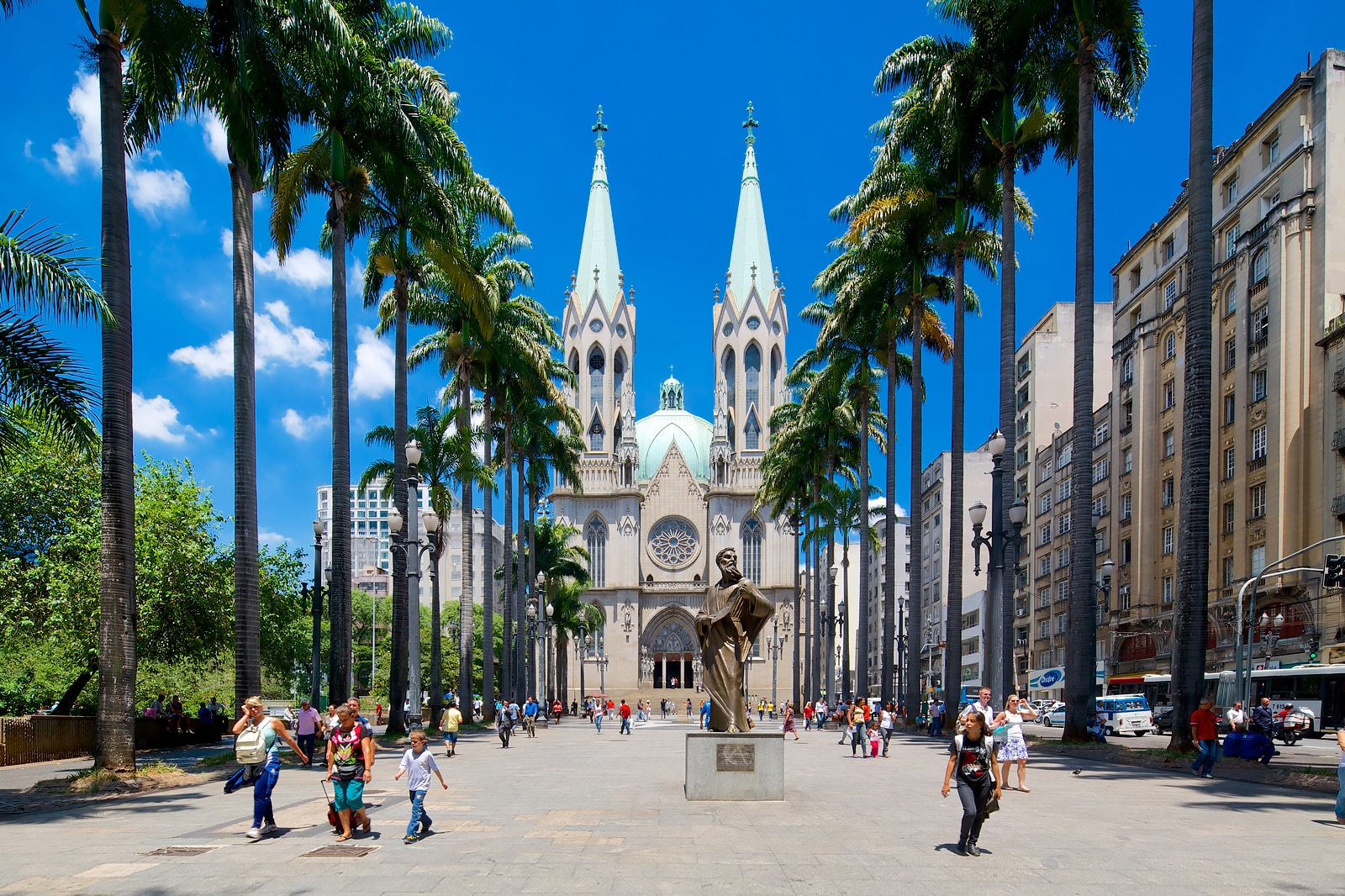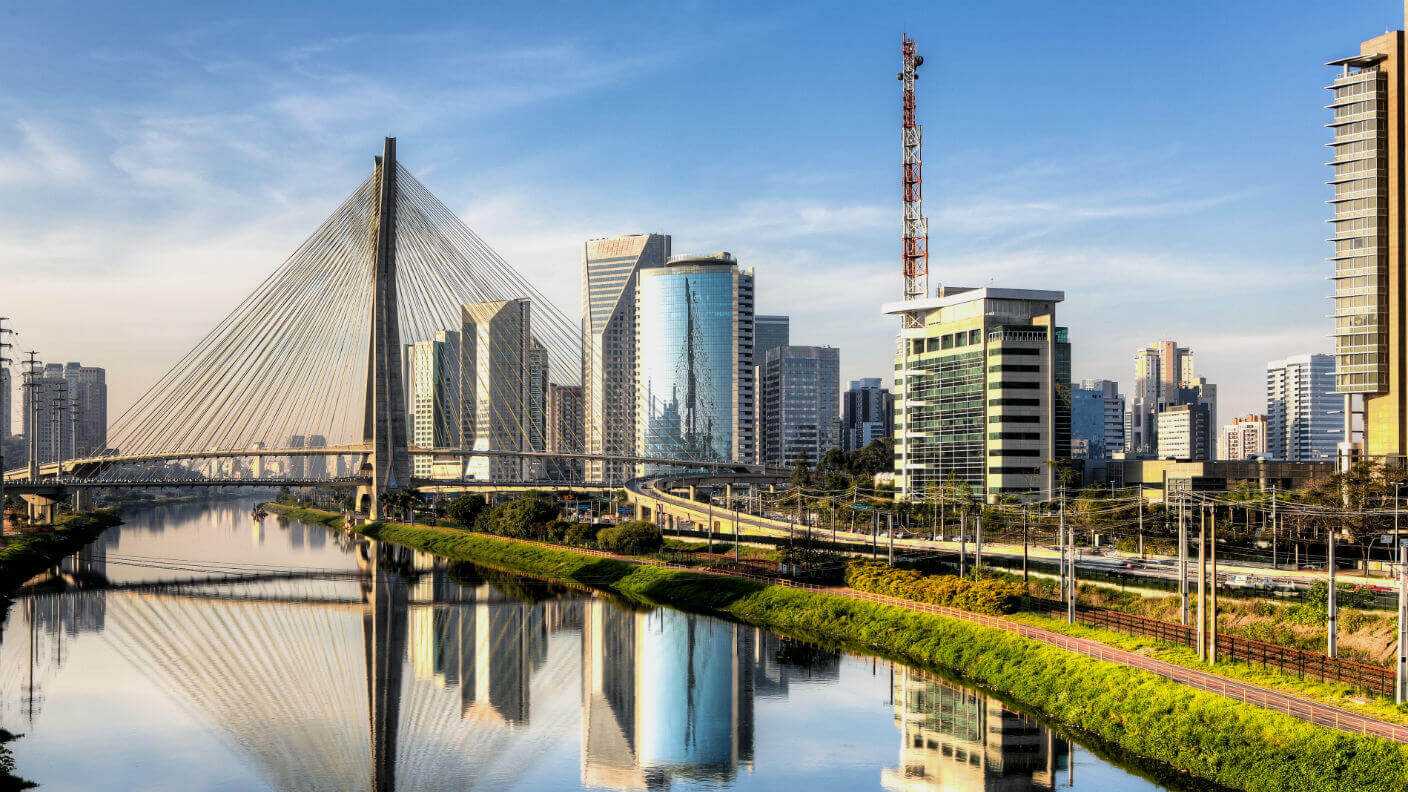São Paulo

São Paulo, a bustling metropolis in southeastern Brazil, is a city that embodies the spirit of a nation in constant evolution. Its story is a tapestry woven with threads of indigenous heritage, colonial ambitions, and the relentless energy of immigrants seeking a better life. From its humble beginnings as a small village to its current status as a global economic powerhouse, São Paulo’s journey is one of resilience, innovation, and cultural dynamism.
The Birth of a Metropolis
The city’s origins can be traced back to 1554, when Jesuit missionaries established a small settlement known as “Piratininga” on the banks of the Tietê River. This initial settlement served as a base for the exploration and expansion of the surrounding region, eventually becoming a crucial link in the Portuguese colonial trade network. In the 19th century, São Paulo’s fortunes took a dramatic turn with the discovery of coffee, which transformed the city into a major center of production and export. This economic boom attracted a vast influx of immigrants, primarily from Europe and Asia, who contributed significantly to the city’s growth and cultural diversity.
A Tapestry of Cultures
São Paulo’s cultural landscape is a vibrant mosaic, reflecting the city’s rich and diverse history. The city’s artistic scene is renowned for its contemporary art galleries, museums, and vibrant street art. From the iconic Pinacoteca de São Paulo, showcasing Brazilian art from the 19th century to the present, to the Museu de Arte Moderna de São Paulo (MAM), known for its collection of modern and contemporary art, São Paulo offers a wide range of artistic experiences.
The city’s musical heritage is equally impressive, encompassing genres ranging from classical music to samba, bossa nova, and electronic music. The vibrant nightlife of São Paulo is a testament to the city’s musical diversity, with numerous clubs, bars, and concert halls hosting a wide array of musical performances.
São Paulo’s culinary scene is a delightful fusion of flavors, influenced by the city’s diverse population. From traditional Brazilian dishes like feijoada, a hearty bean stew, to international cuisines like Italian, Japanese, and Lebanese, São Paulo offers a gastronomic adventure for every palate. The city’s street food culture is equally vibrant, with vendors offering a variety of snacks and meals, from pastel, a deep-fried pastry filled with various ingredients, to coxinha, a savory chicken croquette.
The Impact of Immigration
Immigration has played a pivotal role in shaping São Paulo’s identity. The city’s diverse population, with roots in Italy, Portugal, Japan, Lebanon, and many other countries, has enriched its cultural landscape, contributing to its culinary traditions, artistic expressions, and economic development.
The influx of immigrants has also had a profound impact on the city’s urban fabric. The neighborhoods of Liberdade, with its Japanese cultural influences, and Bexiga, known for its Italian heritage, are testaments to the city’s multicultural character. These neighborhoods have preserved their distinct cultural identities, while also integrating seamlessly into the larger urban fabric of São Paulo.
Architectural Contrast
São Paulo’s skyline is a striking juxtaposition of modern and historical architecture. The city’s historical center is home to grand colonial buildings, such as the Theatro Municipal de São Paulo, a neoclassical opera house, and the Pátio do Colégio, a former Jesuit college, which stand as reminders of the city’s rich past.
In contrast, the city’s modern skyline is dominated by towering skyscrapers, such as the Mirante do Vale, the tallest building in Brazil, and the Edifício Itália, a landmark skyscraper that offers stunning panoramic views of the city. This architectural contrast reflects São Paulo’s dynamic evolution, a city that embraces its past while forging a bold future.
Life in São Paulo: Sao Paulo Brazil

São Paulo, a vibrant metropolis in southeastern Brazil, pulsates with the energy of its diverse population and the relentless rhythm of modern life. Its streets are a tapestry of cultures, languages, and aspirations, offering a glimpse into the heart of Brazil’s economic and cultural powerhouse.
Daily Routines and Transportation
The city’s residents navigate a complex web of routines, adapting to the demands of a fast-paced environment. A typical day in São Paulo begins with the cacophony of traffic, as commuters flood the streets, seeking to reach their workplaces, schools, and daily destinations.
- The city’s public transportation system, known as the “Metrô,” is a lifeline for millions of residents, offering a reliable and efficient means of traversing the sprawling urban landscape. The subway network, complemented by an extensive bus system, provides connectivity across the city, connecting neighborhoods, business districts, and cultural hubs.
- The city’s residents are accustomed to navigating the dense traffic, often spending hours on the road, especially during peak hours. However, this constant movement also reflects the city’s dynamism, a testament to its entrepreneurial spirit and its constant pursuit of progress.
- Many residents embrace the concept of “slow living,” seeking moments of tranquility amidst the urban bustle. Parks, such as Ibirapuera Park, offer a respite from the city’s hustle, providing green spaces for relaxation, recreation, and social gatherings.
Social Dynamics and Neighborhoods, Sao paulo brazil
São Paulo is a microcosm of Brazilian society, reflecting the country’s rich cultural diversity and socioeconomic complexities. Its neighborhoods, each with its distinct character and identity, offer a glimpse into the city’s social tapestry.
- The city’s central districts, such as the “Centro,” are bustling commercial hubs, attracting a diverse population of workers, shoppers, and tourists. This area is characterized by its historic architecture, its vibrant street life, and its bustling markets.
- Neighborhoods like Vila Madalena, known for its bohemian atmosphere and its vibrant artistic scene, offer a glimpse into the city’s creative energy. This area is home to numerous art galleries, studios, and music venues, attracting artists, musicians, and cultural enthusiasts.
- The city’s wealthier districts, such as Morumbi, are characterized by their upscale residences, sprawling parks, and exclusive shopping malls. This area is a testament to the city’s economic success and its concentration of wealth.
Challenges and Opportunities
Despite its economic dynamism, São Paulo faces significant challenges, particularly in the areas of housing, healthcare, and education.
- The city’s housing market is characterized by high costs, particularly in the central and wealthier districts. This can make it difficult for many residents, especially those with lower incomes, to find affordable housing options.
- The city’s public healthcare system, while extensive, faces challenges in providing quality care to all residents. The growing population and the increasing demand for healthcare services put a strain on the system, leading to long wait times and limited access to specialized care.
- Education is a key priority for many residents, but access to quality education remains a challenge for some, particularly in underserved communities. The city’s public schools, while numerous, face challenges in providing adequate resources and support for all students.
Visual Representation of a Typical Day
Imagine a morning commute, a sea of faces navigating the bustling streets. The “Metrô” rumbles beneath the city, transporting commuters from their homes to their workplaces. As the sun rises, the city awakens, the sounds of traffic blending with the melodies of street musicians.
“São Paulo is a city of contrasts, a place where tradition and modernity collide, where the old and the new coexist.”
The aroma of coffee wafts from sidewalk cafes, inviting residents to take a moment to pause and enjoy the city’s vibrant atmosphere. The city’s parks, oases of green amidst the concrete jungle, offer a respite from the urban bustle.
In the afternoon, the city’s streets are filled with the energy of shoppers, students, and office workers. The city’s diverse culinary scene offers a taste of global flavors, from traditional Brazilian cuisine to international fare.
As evening descends, the city transforms, its skyline illuminated by a tapestry of lights. The city’s cultural venues, theaters, museums, and concert halls come alive, offering a rich tapestry of entertainment and artistic expression.
Sao paulo brazil – São Paulo is a city that never sleeps, always buzzing with energy and life. It’s a place where you can find anything, from high-end boutiques to street food vendors. And now, there’s something new to add to the list: Polly Pockets Airbnb , a nostalgic throwback to childhood memories.
Imagine waking up in a miniature world, complete with tiny furniture and working appliances. It’s a unique experience that’s sure to make your trip to São Paulo even more memorable.
Sao Paulo, Brazil, is a city that never sleeps, pulsating with energy and a vibrant culture. From its towering skyscrapers to its bustling street markets, there’s always something new to discover. It’s a city that inspires creativity, much like the work of linsey davis , a multifaceted artist whose work reflects a similar spirit of innovation and dynamism.
Just like Sao Paulo, linsey davis pushes boundaries and challenges expectations, leaving a lasting impression on anyone who encounters their work.
